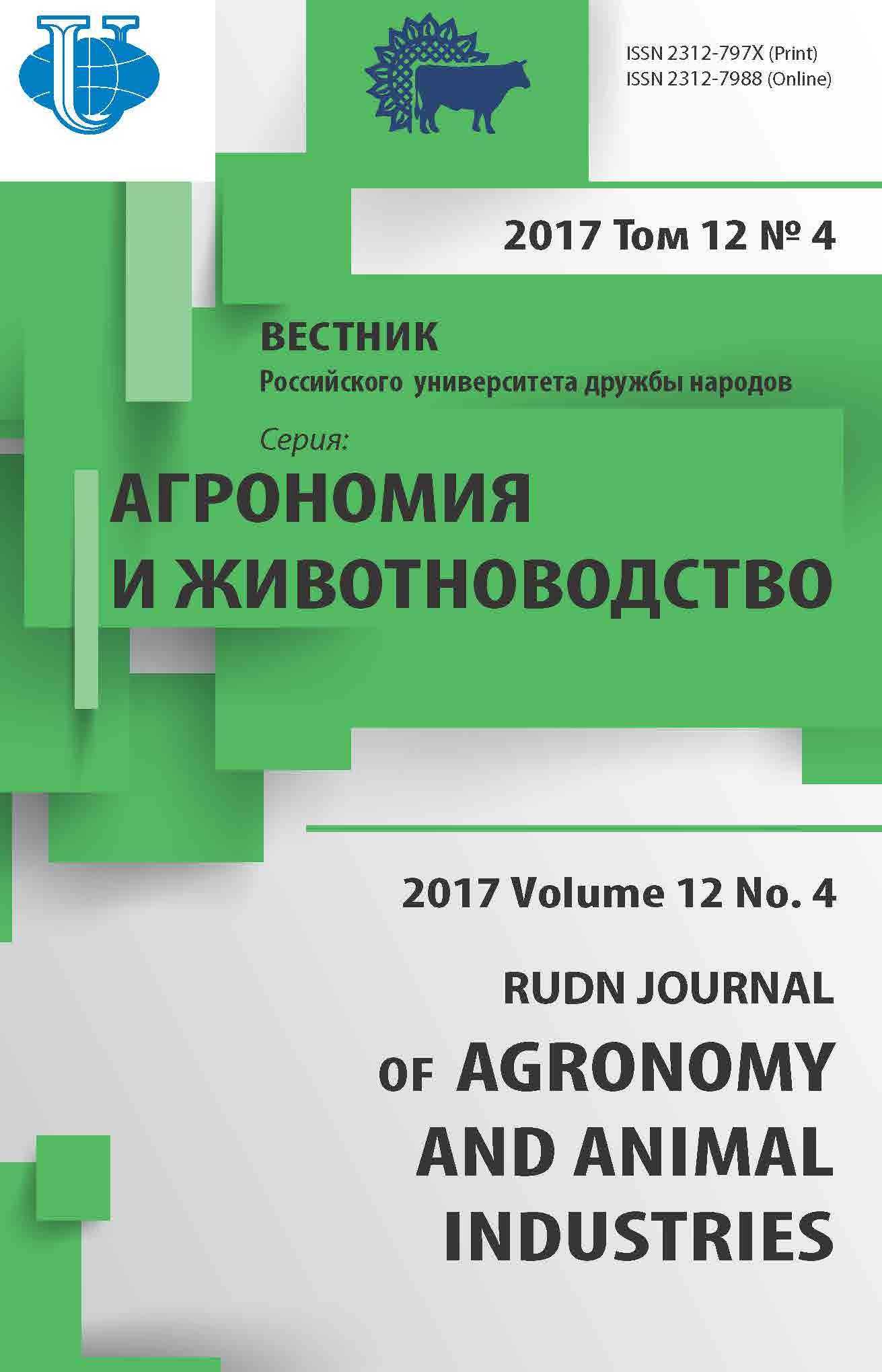MORBIDITY OF CATTLE WITH ANTHRAX IN THE REPUBLIC OF CHAD
- Authors: Yamtitina M.N.1, Antipas B.B.1, Makarov VV1
-
Affiliations:
- Peoples’ Friendship University of Russia (RUDN University)
- Issue: Vol 12, No 4 (2017)
- Pages: 368-373
- Section: Articles
- URL: https://agrojournal.rudn.ru/agronomy/article/view/17480
- DOI: https://doi.org/10.22363/2312-797X-2017-12-4-368-373
- ID: 17480
Cite item
Full Text
Abstract
The unfavorable situation of epizootic anthrax in the Republic of Tchad plays a horrendous role marked with enormously negative impacts on the growth of livestock-breeding (animal husbandry) sec-tor. As a matter-of-fact, a wide variety of animals fall prey to this endemic ailment annually, especially cattle. The most practiced form of ranging in Tchad entails cattle breeding which involves the transmutations of breeds. Owing to the paucity of comprehensive frameworks designed to circumvent and arrest unintended repercussions in the administration of such a practice, the practice is susceptible to a plethora of errors that in turn facilitate epizootic processes, including epizootics of anthrax. More often than not, it is trans-mitted from one region of the country to the other. Subsequently, this endangers all other animal husbandry systems and subjects to grave danger people’s lives as well. The epizootic process is a spatial-temporal form of interaction between the population of the parasite and the host population. Nevertheless, the epi-zootic process is subject to influence exerted by the animal husbandry system, i.e. conditions, methods or means of keeping animals in a particular area. In this article is presented the statistics of affected beasts (cattle) in terms of population and these statistics are illustrated with the aid of tables and graphs.
Keywords
About the authors
Mahamat Nguerabe Yamtitina
Peoples’ Friendship University of Russia (RUDN University)
Author for correspondence.
Email: mhtnguerabe@mail.ru
Ямтитина Махамат Нгуерабе - аспирант Департамента ветеринарной медицины Аграрно-технологического института, Российский университет дружбы народов
Miklukho-Maklaya st., 6, Moscow, Russia, 117198Ban-Bo Bebanto Antipas
Peoples’ Friendship University of Russia (RUDN University)
Email: bbantipas@yahoo.fr
Бан-Бо Бебанто Антипас - кандидат ветеринарных наук, заведующий кафедрой Департамента биологии Университета Нджамены, Республика Чад
Miklukho-Maklaya st., 6, Moscow, Russia, 117198V V Makarov
Peoples’ Friendship University of Russia (RUDN University)
Email: vvm-39@mail.ru
Макаров Владимир Владимирович - доктор биологических наук, профессор Департамента ветеринарной медицины Аграрно-технологического института, Российский университет дружбы народов
Miklukho-Maklaya st., 6, Moscow, Russia, 117198References
- Makarov V.V., Briko N.I., Sukharev O.I. Mirovoy nozoareal sibirskoy yazvy. Veterinarnaya patologiya. 2012. № 1. S. 7—15.
- Uyazvleniye Yamala. V Rossii proizoshla krupneyshaya za posledniye 37 let vspyshka sibirskoy yazvy. https://lenta.ru/articles/2016/08/03/yazva/ (data otkrytiya 12.09.17).
- Rapport de campagne de vaccination d'urgence contre les maladies telluriques dans le secteur de Massenya. Rapport trimestriel du secteur de Massenya. N'Djaména: Direction de l'Elevage/ Délégation du Centre-Ouest. 2010. 23 p.
- Ministеrе dе l’еlеvаgе еt dеs rеsоurcеs аnimаls du Tchаd. Plаn nаtiоnаl dе dеvеlоppеmеnt dе l’еlеvаgе (2009—2016), juillеt 2008. 125 p.
- Tchad Direction de l’elevage et des ressources animales. Rapport annuel 2001—2003, N'Djaména, DERA. 2001—2011. 105 p.
- Tchackall G. Situation du charbon bactéridien dans le département de Mayo-Boneye. Mémoire de fin de formation: Centredeformation Agro-Sylvo-Pastoral: N'Djamena. 2011. 125 p.
- Zеunеn J. Vаccinаtiоn cоntrе lе chаrbоn bаctеridiеn. Аun. Mеd.Vеtеrin. 1975. Plan natiоnаl dе dеvеlоppеmеnt dе l’еlеvаgе (2009—2016), juillеt 2008.
Supplementary files















